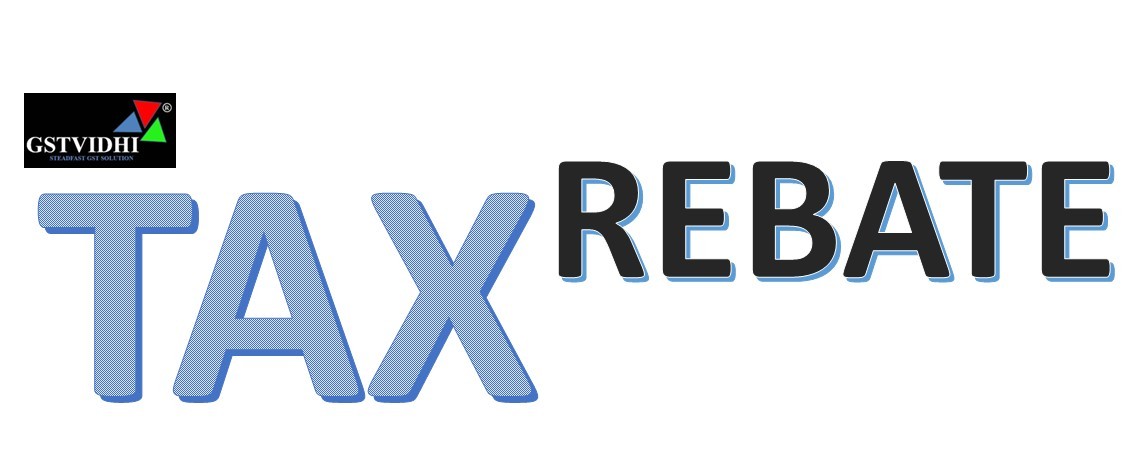
Rebate of Income-Tax in Case of Section 87A / 87A Rebate Under
Income Tax Act / Rebate of Section 87A
Section 87A of the
Income-tax Act provides relief to individual taxpayers who are residents of
India and earn income below a specified limit. This rebate helps in reducing
their overall tax liability.
Basic Provision of
Section 87A
An individual who is a
resident in India and whose total income does not exceed ₹5,00,000 in a
financial year is eligible to claim an income-tax rebate. The rebate is
available up to the amount of income tax payable or ₹12,500, whichever is
lower. This means that a resident individual having income up to ₹5 lakh
effectively does not have to pay any income tax under the old regime.
Rebate under New Regime
(Section 115BAC)
From Assessment Year
2024-25, the rebate has been extended under the new tax regime (Section
115BAC(1A)). In this case, if the total income does not exceed ₹7,00,000, the
assessee is eligible to claim rebate up to ₹25,000.
From Assessment Year 2026-27 onwards, the rebate limit will further increase.
If the total income does not exceed ₹12,00,000, the taxpayer will be eligible
for a rebate of up to ₹60,000.
Essential Conditions
1. This
rebate is available only to resident individuals and not to
non-residents or companies.
2. It
applies to total income, not gross income.
3. The
rebate is given before adding health and education cess.
4. If
there is negative income from house property (such as interest on home loan for
self-occupied property), it should also be considered while calculating total
income.
5. Even
if the final tax liability becomes zero after rebate, filing of income-tax
return is still compulsory.
Rebate Limit Over the
Years (Old Regime)
- AY 2021-22 onwards: ₹12,500 (for
income up to ₹5,00,000)
- AY 2019-20 & 2020-21: ₹12,500
(for income up to ₹3,50,000 or ₹5,00,000 depending on the year)
- Earlier years had lower rebate limits
such as ₹2,000 or ₹2,500.
Illustration (Old Regime)
If a person has taxable
income of ₹3,00,000, the tax payable before cess is ₹2,500, and rebate under
Section 87A is also ₹2,500, so the net tax payable becomes nil. Similarly, for
income of ₹5,00,000, the tax payable of ₹12,500 is fully covered by rebate,
resulting in zero tax. But if income is ₹5,10,000, then the rebate is not
available, and tax becomes payable.
Illustration (New Regime)
For income up to
₹7,00,000 (AY 2024-25 & 2025-26), tax rebate up to ₹25,000 will be
available, leading to zero tax liability. From AY 2026-27, the benefit will be
available for income up to ₹12,00,000 with a maximum rebate of ₹60,000.
Marginal Relief
A special provision
ensures that a person whose income slightly exceeds the rebate limit does not
pay disproportionately high tax. For example, if income is ₹12,10,000, the tax
payable before rebate is ₹61,500, but rebate of ₹51,500 is given so that net tax
payable is only ₹10,000. This ensures fair taxation at the margin.
Conclusion
Section 87A is a major
relief for small and middle-income taxpayers. Under the old regime, it helps
individuals with income up to ₹5 lakh to pay zero tax. Under the new regime,
the benefit is higher, as incomes up to ₹7 lakh (and from AY 2026-27, up to ₹12
lakh) can enjoy full rebate. This provision ensures that tax burden on low and
middle-class taxpayers remains minimal, thereby providing relief and
encouraging compliance.
Disclaimer: All the Information is based on the notification, circular advisory and order issued by the Govt. authority and judgement delivered by the court or the authority information is strictly for educational purposes and on the basis of our best understanding of laws & not binding on anyone.
Press On Click Here To Download Order File
Click here